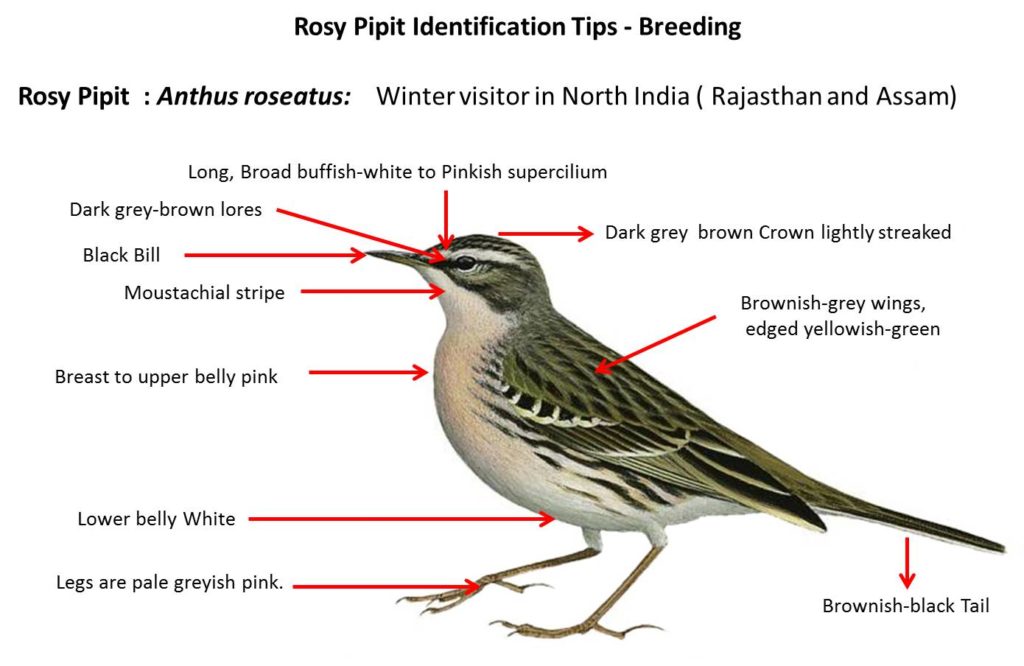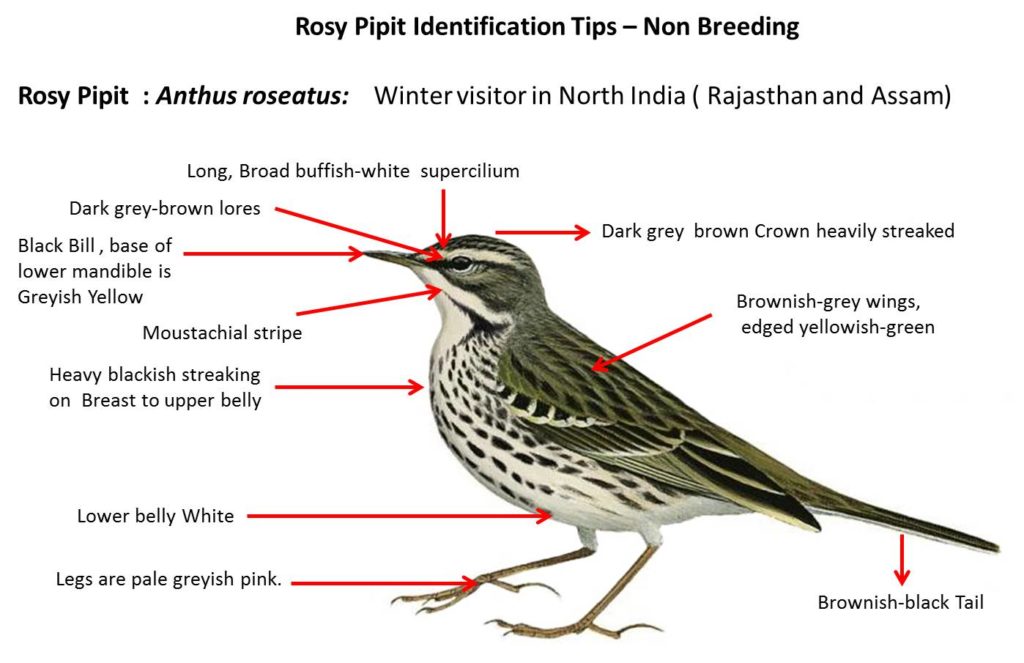

Rosy Pipit Anthus roseatus
Etymology:
- Anthus : Based on Greek mythology.Anthus, son ofAntinous and Hippodamia, was killed by his father’s horses and metamorphosed into a bird which imitated theneighing of horses but fled at their sight.
- Roseatus : Latin word for Rosy coloured
Vernacular Names: Pun: Lal charchari, Guj: Hodgson-no dhan chidi
Distribution in India: Breeds in East Himalayas to North East India (Arunachal Pradesh); Winter visitor to North India (Uttarakhand southwards to Rajasthan and Assam)
Description: Size of 15–16·5 cm; wt. of 17–25 g. It is a pipit with seasonal differences in plumage. The breeding plumage is distinctive. It has a very long, broad buffish-white to pinkish supercilium, dark grey-brown lores and moustachial stripe; crown and upperparts are grey-brown, tinged greenish, crown lightly streaked dark, mantle broadly and distinctly streaked dark grey-brown. The wing feathers are brownish-grey, edged yellowish-green, median and greater wing-coverts are tipped pale grey-brown, tertial edges are pale grey-buff. The tail is brownish-black. The central four feather pairs are edged yellowish-green, next pair with brownish-white tip, outermost with outer web whitish with brownish-grey tinge. The throat is pale pinkish; breast to upper belly is pink, sometimes tinged buffish, breast side is rich buff, rest of underparts are pale buffish to whitish, breast and flanks are streaked blackish-brown. The axillaries are lemon-yellow; underwing-coverts are grey, fringed greenish-yellow. The iris is dark brown; bill is blackish; legs are pale greyish pink. In non-breeding plumage, the crown is more streaked, has dark malar stripe and patch, more prominent wingbars; pale buffish or whitish below lacking pink tones, heavy blackish-brown streaking on breast and flanks; base of lower mandible is greyish-yellow. Both the sexes are alike. The juvenile resembles non-breeding adult, but browner above, supercilium duskier and less distinct, sometimes indistinctly streaked on back and rump.
Habitat: It breeds on alpine meadows and boulder-strewn grassy slopes, patches of melting snow and on marshy or waterlogged ground. It is found up to 5300 m. It winters in foothills and on plains on short grassland, often near water, and in marshy areas and paddyfields, down to 1500 m.
Food Habits: It eats Insects, seeds and berries. It forages on the ground; picks food items from ground surface or from low vegetation. It also ingests grit.
Breeding habits: They breed in May to Aug. In display-flight, the male rises into air and sings, descends slowly on outstretched wings. The nest is a cup of grass, lined with finer grass and some hair, built in depression, made by the bird itself, under rock or tuft of grass. They lay a clutch of 3–4 eggs. Nest is parasitized by cuckoos.